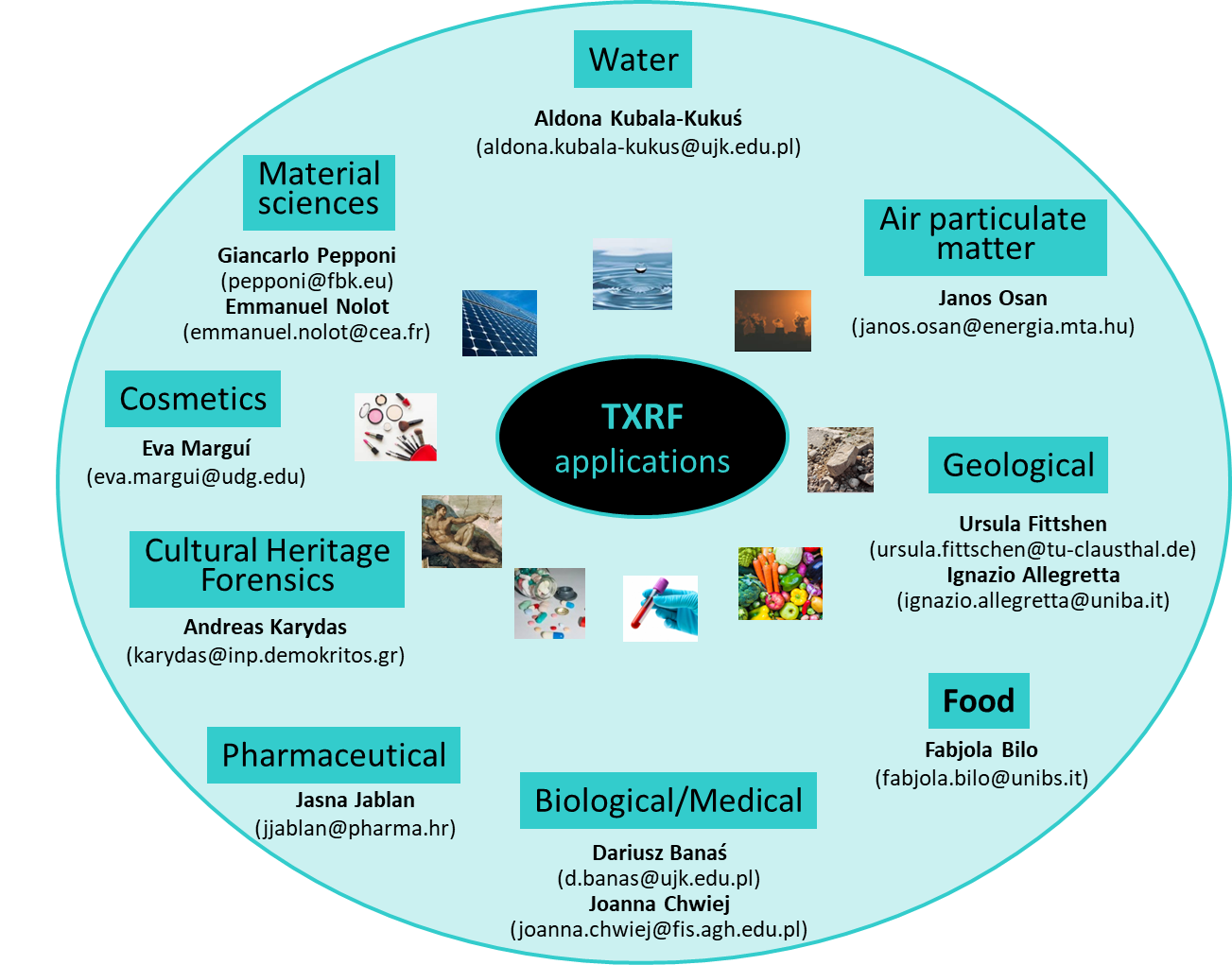WORKING GROUPS
WG3: Sample preparation and analytical procedures
Leaders: E. Margui [ES] & Y. Arslan [TR]
Objectives
The main goal of WG3 “Sample preparation and Analytical procedures”, is to contribute to the improvement of existing methodologies and development of new sample preparation strategies and analytical procedures to promote TXRF application for screening, quality control and monitoring purposes in many different fields. This aim will be accomplished via the specific objectives and activities shown below.
Detailed Objectives
- Study of the state of the art of TXRF in many applications fields and related types of samples: water, air particulate matter, geological, food, biological, medical, pharmaceutical, cultural heritage, forensics, cosmetics and material sciences
- Development of specific sample preparation methods and analytical procedures, considering the characteristics of samples, to overcome existing limitations and improve the quality of the TXRF results
- Development of sample treatment procedures within the framework of green analytical chemistry (i.e, slurry preparation, microextractrion strategies, etc) in combination with TXRF analysis.
- Fostering the use of TXRF in new emerging applications
Activities
Exploring and improving the potential of TXRF in the field of chemical analysis:
- Collect information about the state of the art of sample preparation methods and TXRF analytical procedures for the screening, quality control and monitoring purposes in many different fields.
- Review and creation of a database about the characteristics and availability of standards in each application field (water, air particulate matter, geological, food, biological/medical, pharmaceutical, cultural heritage/forensics, cosmetics and material sciences).
- Proposing new sample treatment procedures, within the framework of green analytical chemistry, and existing ones to overcome limitations knowledge based and improve the quality of TXRF results.
- Identification of the possibilities and drawbacks of TXRF in different fields in order to highlight its potential in comparison with other spectroscopic techniques.
Scientific cooperation
- Connecting and strengthening collaborations among European and International scientists working in TXRF analysis in specific fields of application.
Dissemination and training
- Organization of dissemination events such as training schools, conferences and workshops dedicated to sample preparation and analytical procedures in TXRF analysis.
Structure
WG3 is divided in nine thematic groups, corresponding to the main application fields of TXRF analysis. Each thematic group is led by a scientist (group coordinator) who is expert in the field.

HOW YOU CAN JOIN WG3?
Express your interest to join WG3 by applying through the following link.
It is required to have an e-COST profile to submit your application. You can get a profile using also the link above.